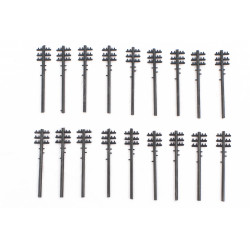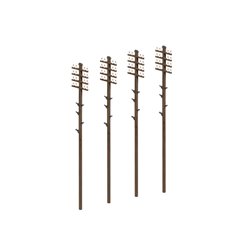Static grass puffer bottles work by manually charging model grass fibres with static electricity. When the charged...
No products
Product successfully added to your shopping cart
There are 0 items in your cart. There is 1 item in your cart.
Search Tips
How far apart should telegraph poles be on N and OO/HO gauge layouts?
Telegraph poles are a common feature on model railway layouts, as they can add a touch of realism and authenticity to the scene. The distance between telegraph poles can vary depending on the scale of a particular layout.
For N gauge layouts, which have a scale of 1:148, the distance between telegraph poles should be approximately 50 to 60 feet (15 to 18 meters) in real life. In N gauge, this translates to approximately 5 to 6 inches (12.5 to 15 centimetres) on a layout. This spacing allows for a realistic representation of the poles without overcrowding the scene.
On the other hand, OO gauge layouts have a scale of 1:76, whilst HO gauge layouts have a scale of 1:87. For either of these options, the distance required would be approximately 12 to 15 inches (30 to 38 centimetres) on a layout.
It's worth noting that these measurements are approximate and can be adjusted based on personal preferences and the specific needs of the layout. Additionally, a modeller may want to consider the height of the telegraph poles, ensuring they are proportional to the distance between them and the overall scale of your layout.
Click here to receive the tips weekly in your mailbox. You can unsubscribe at any time.










